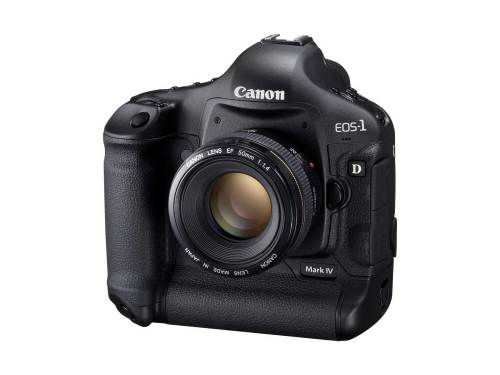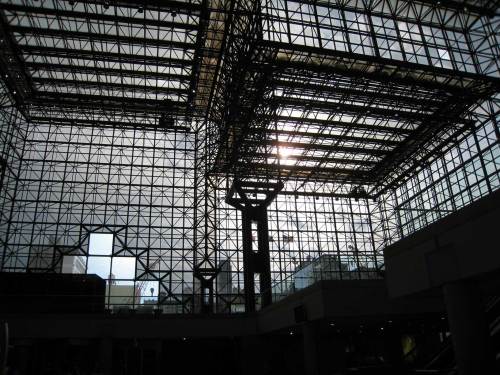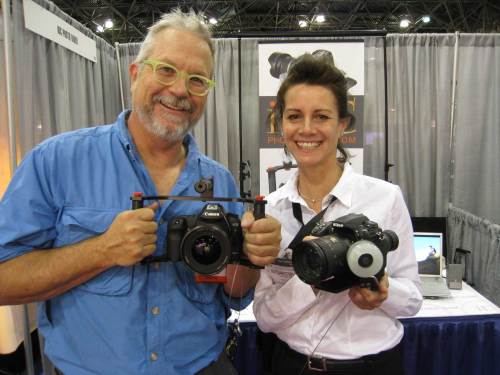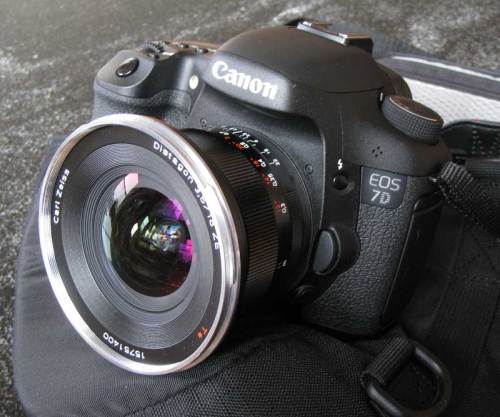
Just when we thought it was safe to proclaim the recently released sensational Canon EOS 7D the almost-holy grail of the new generation of HDSLR cameras, along comes the totally newer, bigger, faster, stronger and higher-end Canon EOS-1D Mark IV. Complete specs and details on Canon website.
Faster. Its APS-H sized 16.1 Megapixel sensor and advanced processors let you shoot stills up to 10 fps (121 frame burst) and 30p, 25p or 24p 1920×1080 HD video. The 1D Mark IV is also way faster in sensitivity. Imagine shooting from 100 ISO to 12,800 ISO, with an extended, processed and amped sensitivity up to a night-vision-like 102,400 ISO. The picture below was shot with an EOS 7D, set to Hi ISO (12,800) using an 18-135 zoom at 18mm, f/3.5 at 1/50th sec. None of my Kelly Calculators or Lightmeters go that high, but quick math shows what ISO 102,400 would be like. Nighthawks: at least another 3-4 stops, standard lenses and slower telephotos at night. See Vincent Laforet’s video shot with 1D Mark IV in “available, really awful lighting” at night.

EOS 7D, set to Hi ISO (12,800) using an 18-135 zoom at 18mm, f/3.5 at 1/50th sec.
Bigger. The 1D image sensor is slightly larger than the 7D’s. The 1D uses an APS-H size sensor, 27.9mm wide x 18.6mm high (the 7D is APS-C size, 22.3mm x 14.9mm).

Self Cleaning Sensor Assembly
The pixels are slightly larger than the 7D (5.7 microns vs. 4.3 microns). Bigger pixels are usually like bigger water buckets that can catch more raindrops (photons), which is why they can be more sensitive. The 1D has lower noise, and a colleague who wished to remain anonymous said that it looked better at 6400 ISO than most current cameras, still or motion, at 400 ISO. We are entering new realms of vision.

APS-H Size Sensor
Digital Eyemo IV or Motion Picture Camera? It’s a sure bet that the 1D Mark IV will be used in HD 24P mode for motion pictures. The full HD video has similar specs to the 7D. There is on onboard mono mic in front, stereo audio miniplug input, and HDMI output.

Exploded View Canon EOS-1D Mark IV
What I’m not sure of yet is whether this camera will undergo retrofit madness at the hands of machine shops everywhere in the alchemy of attempting to append PL mounts. PL mount lenses are mostly optimized for a 24mm horizontal frame—so will the APS-H sensor have edge fall-off because it is a little larger? We shall see.

Cross Section from Camera Left Side
Faster. Compared with the 7D, this camera handles autofocus more precisely. The AI Servo II technology employs 45 precise focus points and new focusing algorithms to increase the amount of in-focus shots. The sensor can detect more points of focus and makes better decisions on handling moving subjects. This will be especially helpful for sports, news and documentary photographers and cinematographers.

Rugged Magnesium Alloy Body
Stronger. For serious production, this camera is more rugged. The body is magnesium alloy, with 77 seals to make it weatherproof. The 920,000 dot clear-view screen on the back is tempered glass with a scratch-resistant anti-glare coating. It’s easier to see in bright light.
Like previous Canon 1D cameras, there’s a microphone on the rear to record notes about your still shots, and a small speaker for playback.
Dynamic range has been improved. The dual Digic 4 14-bit processors are 6 times more powerful.
The Canon EOS-1D Mark IV uses both CF (Compact Flash) and SDHC Cards. For video, you’ll need Mode 6 UDMA–or SDHC cards rated class 6, or better yet, class 10. The camera is scheduled to be delivered to U.S. dealers in late December, and will be sold in a body-only configuration at an estimated retail price of $4,999.00 .
I’m sure the lines to lay hands on it will be long this Thursday, Friday and Saturday (Oct 22-24) at PDN Photoplus Expo at the Javits Center in New York.

Mirror Assembly and Motors














